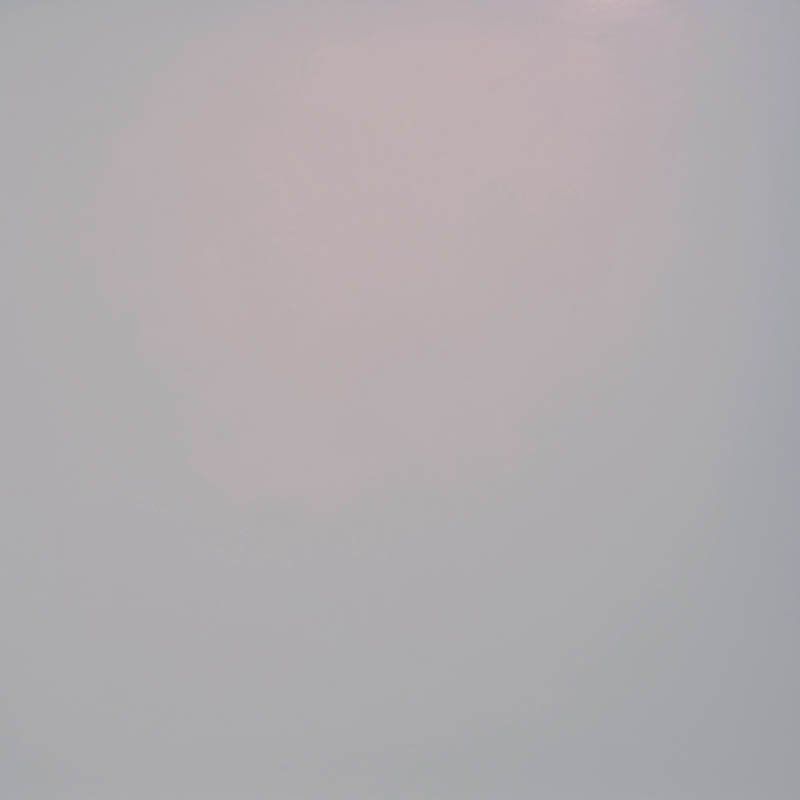Winner - 2019 Lloyd Rees Art Prize
15830 feet above the Great Lake
Whenever I travel by air – travelling by air seems a strange phrase – I request a window seat in order to look at the sky and take multiple photographs. I once saw a rare “glory” which was astounding, an enormous completely circular rainbow. The thing that mesmerised me recently though was the question: how can I paint the ungraspable atmospheric light of the sky, the sky during the descent of an aeroplane over Tasmania?
I recently read a quote by the painter Francis Bacon in which he stated:
You see, I believe that art is recording; I think it is reporting. And I think that in abstract art, as there’s no report, there’s nothing other than the aesthetic of the painter and his few sensations. There is never any tension in it. 1
I do not entirely agree that there is no reporting in a pure abstract painting as abstraction is self-reflexive and has a particular art-historical positioning as well as conveying multiple sensations that render the viewer to complete the work. The thing that moved me about this article was the notion of “tension” in a painting whereby it may be possible to conflate both the abstract and the figurative. The conflation of the abstract and the figurative allows for a tension that I perceive my urge towards non-objective abstraction often struggles with and that Bacon exploits through “the subjugation of chance” 2 . 15830 feet above the Great Lake is a deliberate shift to engage in this notion of tension whilst still retaining the chance that is a part of my art practice. My practice engages primarily with colour – its tone, timbre, light, resonance and energy – and I spend hours trying to “make” particular colours that I see in my mind.
I make my own paints out of a complex series of experimentation. Basically, after gesso preparation, pigments and powders and some acrylic and commercial paint tints are added to a base of Polyurethane water-based floor sealer to achieve the desired colours. These colours are always semi- transparent and I build up multiple glazes to achieve maximum luminosity. I paint in oils occasionally for particular purposes – portraits and landscapes made for my family.
The making of 15830 feet above the Great Lake was a multi-medium process. I first applied several gesso undercoats on birch board, with sanding after each coat, then an all-over orange base (commercial orange with extra tint), which offers luminosity in the final work. All of my paintings have orange edges that glow beyond the frame and onto the wall. I essentially think of paintings as objects with inner energy, and I use orange edges to activate the object-ness of each painting.
15830 feet above the Great Lake started as several acrylic/polyurethane layers, building up the atmosphere. The final two coats were oil paint glazes then a matte wax varnish with ‘interference’ powder (red, purple and green mixture that flicks according to the light and position of the viewer) mixed in solvent to create a subtle fluctuating surface. Adding this very dilute solvent mix to the wax varnish made it possible for me to brush it on in large swoops evenly (I achieved the desired effect after three attempts). After the solvent had dissolved and the remaining wax had hardened, I was able to gently buff it to a satin sheen.
The colour and feel of this painting is that of descending through the clouds. It references the colour of a photograph that I had taken when a flight that I was on started to descend into Hobart. I was able to determine the coordinates of this moment by asking a friend of mine, a pilot who flies regularly to Hobart. This is how the title 15830 feet above the Great Lake came into being.
1 Leiris, Michel, “Intelligence and impulse” first published on March 18, 1977 in the TLS. Reprinted in TLS April 5 2019 pg. 34 2 Ibid.
15,830 feet above the Great Lake
Oil on board
100 x 100cm (board)
$4,700
Oil on board
100 x 100cm (board)
$4,700


